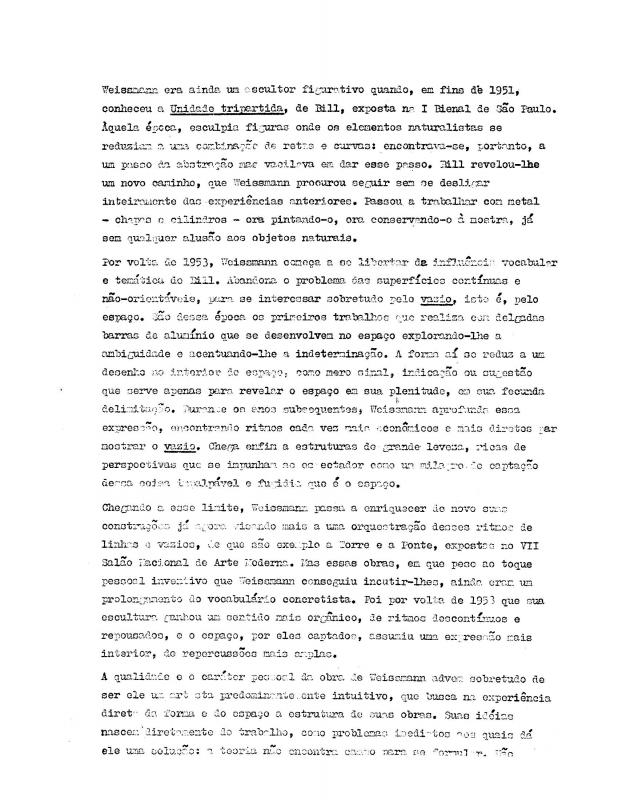In this text, professor, art historian, and critic Quirino Campofiorito offers an overview of Brazilian sculpture from the 1930s through the 1960s. In passing, he comments on the modernization process undertaken by Brazilian art, generally in open conflict with the academy. The critic points out milestones in the changes in perception of and ideas about modern sculpture, highlighting the 1950s in Brazil. That was the decade when artists “broke the common molds until they reached a broader neutral ground for understanding art, throwing out compact volume and the images of beings taken from nature (…) There was a new suggestion of space and a formal rhythm that was completely free, no longer limited to a single possibility for creation: whatever fit the definition of a naturalistic figure.” The writer continues: [The artist] “went on to conceive of the art object in a more absolute sense; it would now be a piece that would comprehend a complete aesthetic objectivity (…).” With this text, Campofiorito seeks to introduce a chronicle of distinguished events and artists, suggesting a history- and nationality-oriented reading of their work; he mentions Victor Brecheret, Adriana Janacopulos, Celso Antonio, Bruno Giorgi, Elisabeth Nobiling, Quirino da Silva, Ernesto de Fiori, Lasar Segall, Alfredo Ceschiatti, José Pedrosa, Franz Weissmann, Sonia Ebling, Francisco Stokinger, Sérgio Camargo, Mario Cravo, Fernando Corona, Antonio Caringi, Maria Martins, Caciporé Torres, Felicia Leirner, Mary Vieira, Luiz Sacilotto, Amílcar de Castro, Lygia Clark, Giulio Vangi, Fernando Jackson Ribeiro, and Zélia Salgado.






